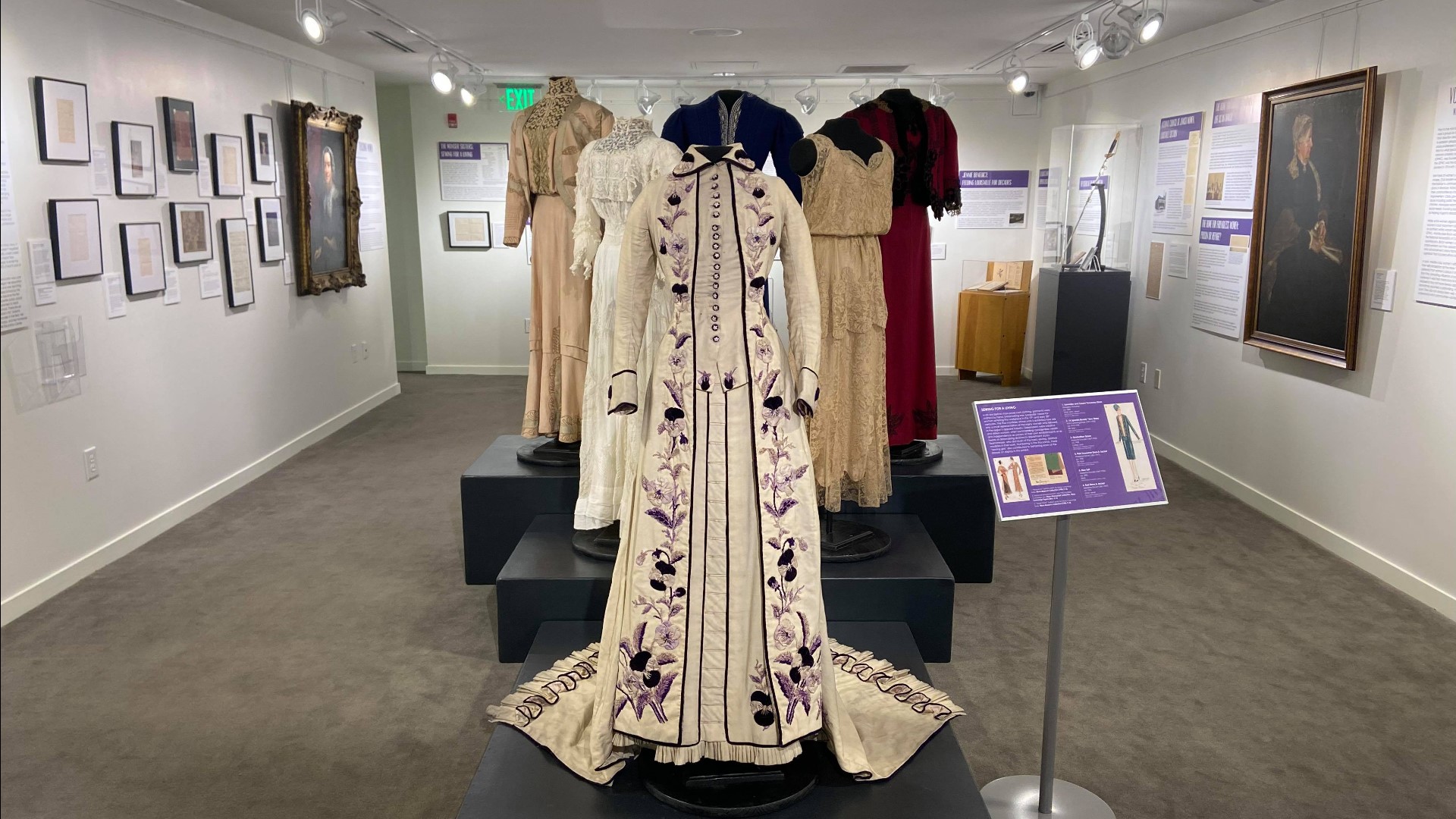LOUISVILLE, Ky. — March is Women’s History Month. For our partnership with the Filson Historical Society, “This Month in History," we’re bringing you the stories of a few working women in the Ohio Valley.
The exhibit is called “Women at Work: Venturing into The Public Sphere.”
The opening date for this exhibit was supposed to be in March 2020. The Filson shut down and hasn’t been open to the public since. There is a virtual exhibit, but WHAS got a look in person.
The exhibit showcases what women were doing throughout the 19th century and into the 20th century in education, the arts, law, business and activism.
“They were supposed to be more in the home or doing work to support the family," Filson Director of Collections Access Jennie Cole said. "But, what happens when they step out into this different space and start advocating and start working?”
The exhibit highlights a few women and organizations that made an impact during this era.
One of the stories on display is the story of Julia Tevis.
Tevis was born in Kentucky, but educated in Washington D.C., because her family felt there weren’t enough educational opportunities in Kentucky. She married and moved back to Kentucky.
She had an arrangement with her husband that she would keep teaching and opened Science Hill Academy in Shelbyville in 1825.
“It wasn't just a finishing school the way some people think about women's higher education schools in the 19th century," Cole said. "She taught philosophy, theology, chemistry."
There Tevis taught more than 3,000 young women over the years.
Around this time, businesswomen were coming onto the scene. Christina Johnson, known as Madame Grunder, was a dressmaker.
“She owned her own sewing shop and was really popular and able to build up a great business,” Cole said.
However, Madame Grunder’s husband had control over her finances and property. So, she petitioned the courts in 1880s for the rights to her own money – and won. She managed her own business until her death in 1920.
Women were also emerging in activism, laying the groundwork for women’s suffrage and women’s rights.
One of those organizations was the Sisters of the Mysterious Ten. It was the sister organization to a Black fraternal order founded in Louisville.
“These women would provide relief to sick members, to those who passed away,” Cole said. “They would take care of families, they worked hard for raising money for widows and orphans’ homes.”
Another organization featured is the National Council of Jewish Women Louisville section. They worked on both religious and social justice initiatives, and are still active today.
Cole noted that most of the women in this exhibit were privileged in some way, and that allowed their records to be preserved. A lot of women who had great impact during this time were not included in historical records, and so the exhibit doesn’t tell a complete story of that time period.
If you want to view the exhibit now, there is a virtual version online, and it will also stay up in the historical society until the end of this year. So if the Filson is able to open, you can check it out in person.
►Contact reporter Rose McBride at rmcbride@whas11.com or on Facebook or Twitter.
►Make it easy to keep up-to-date with more stories like this. Download the WHAS11 News app now. For Apple or Android users.
Have a news tip? Email assign@whas11.com, visit our Facebook page or Twitter feed.

